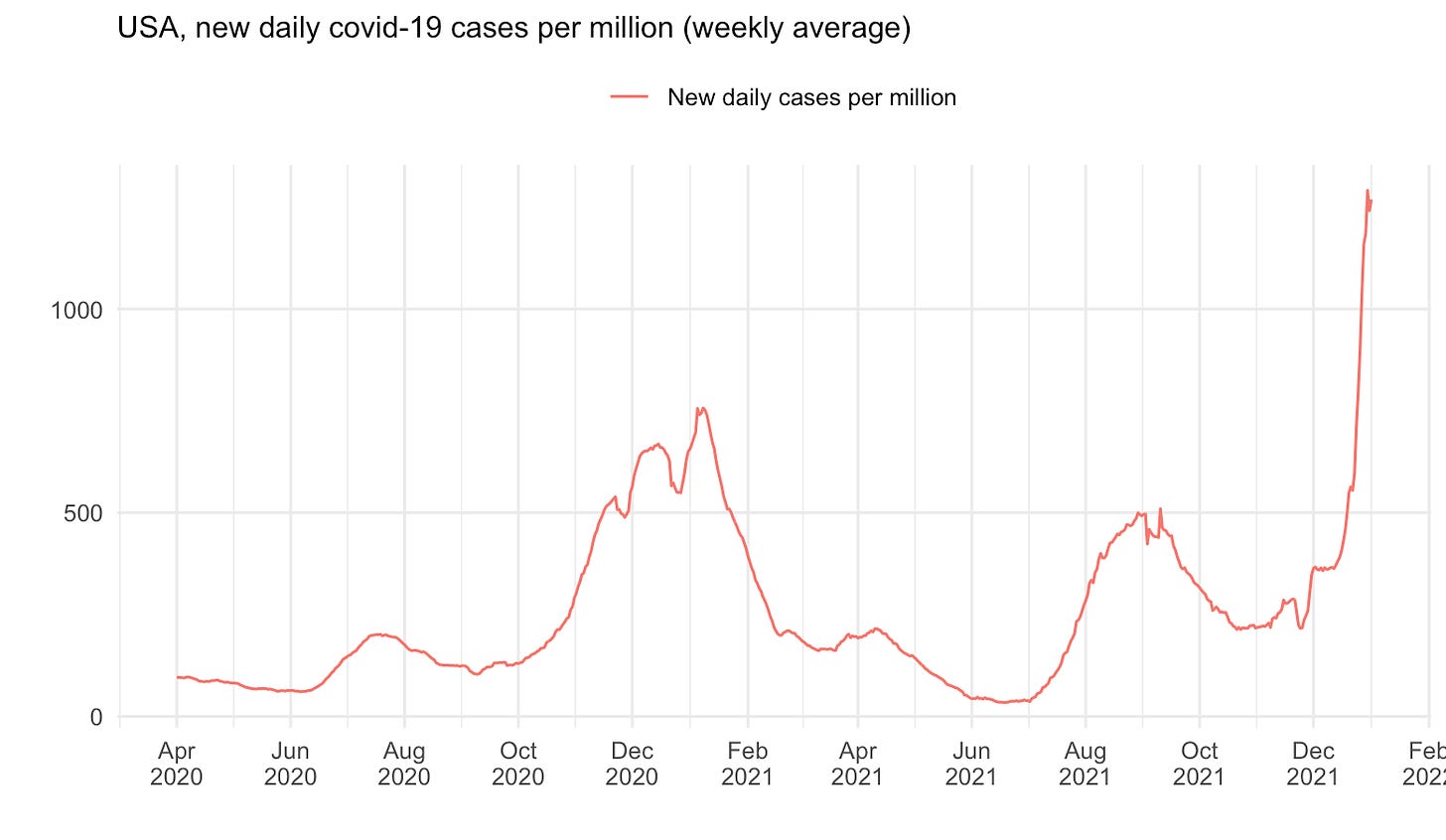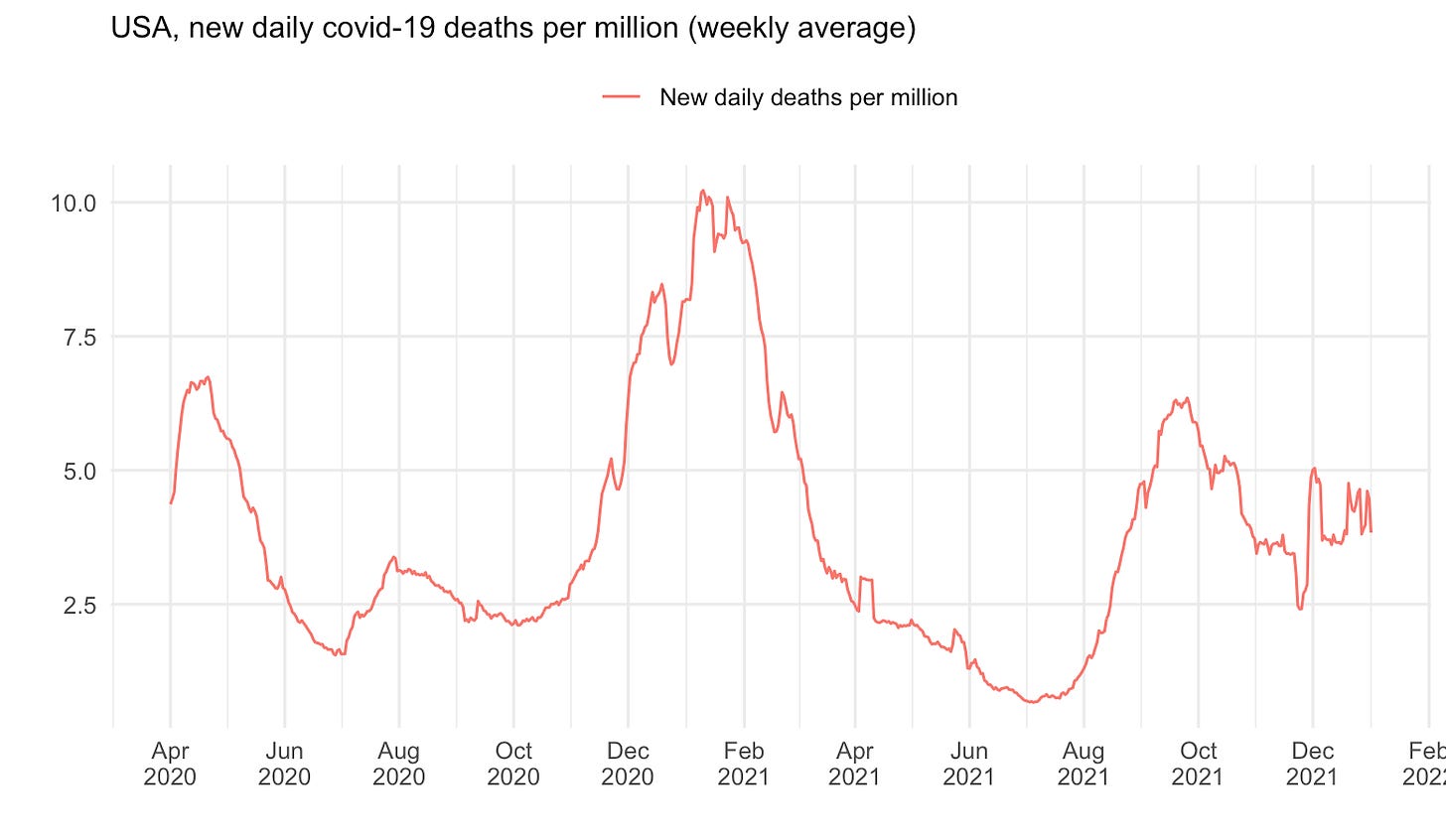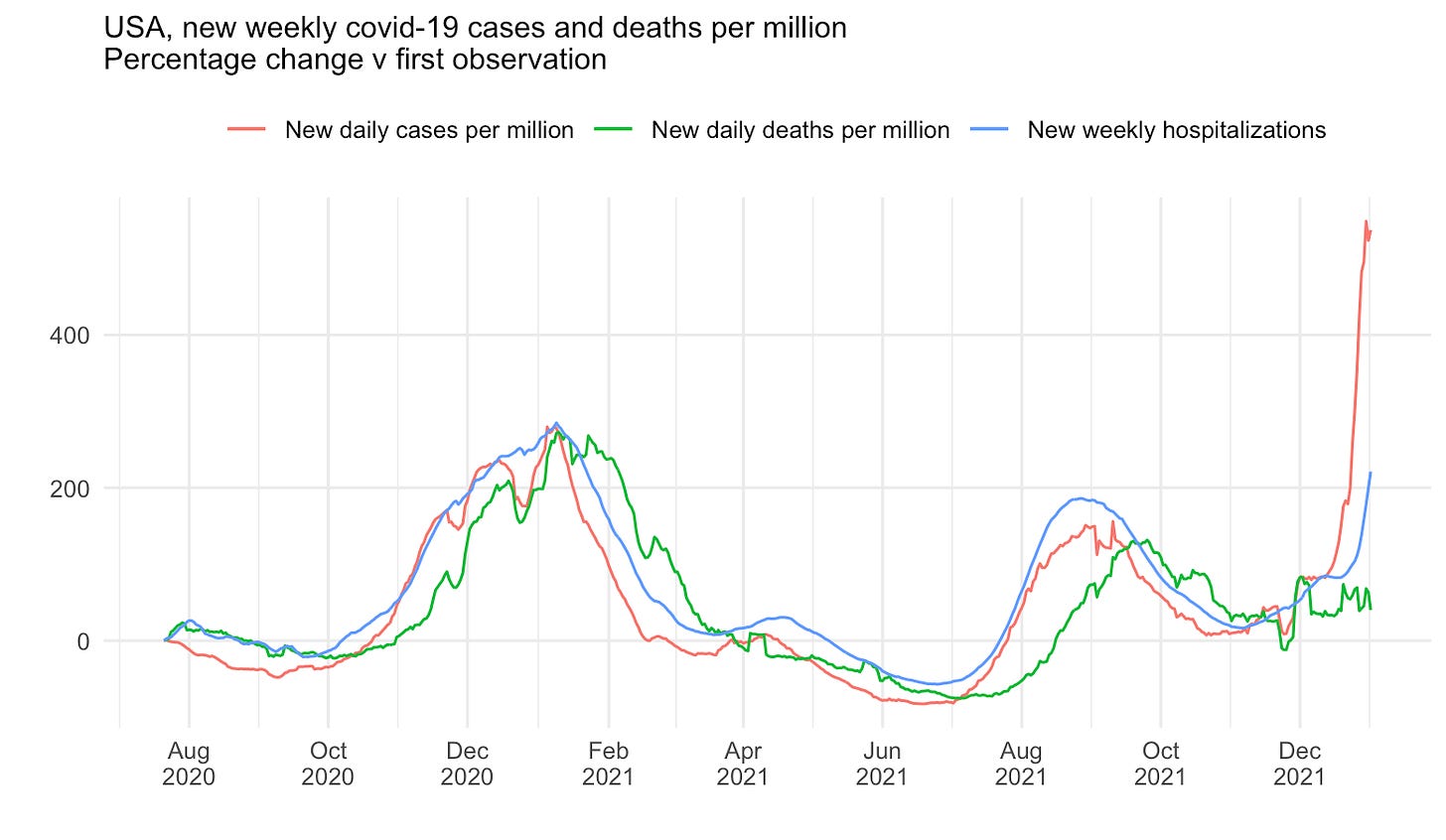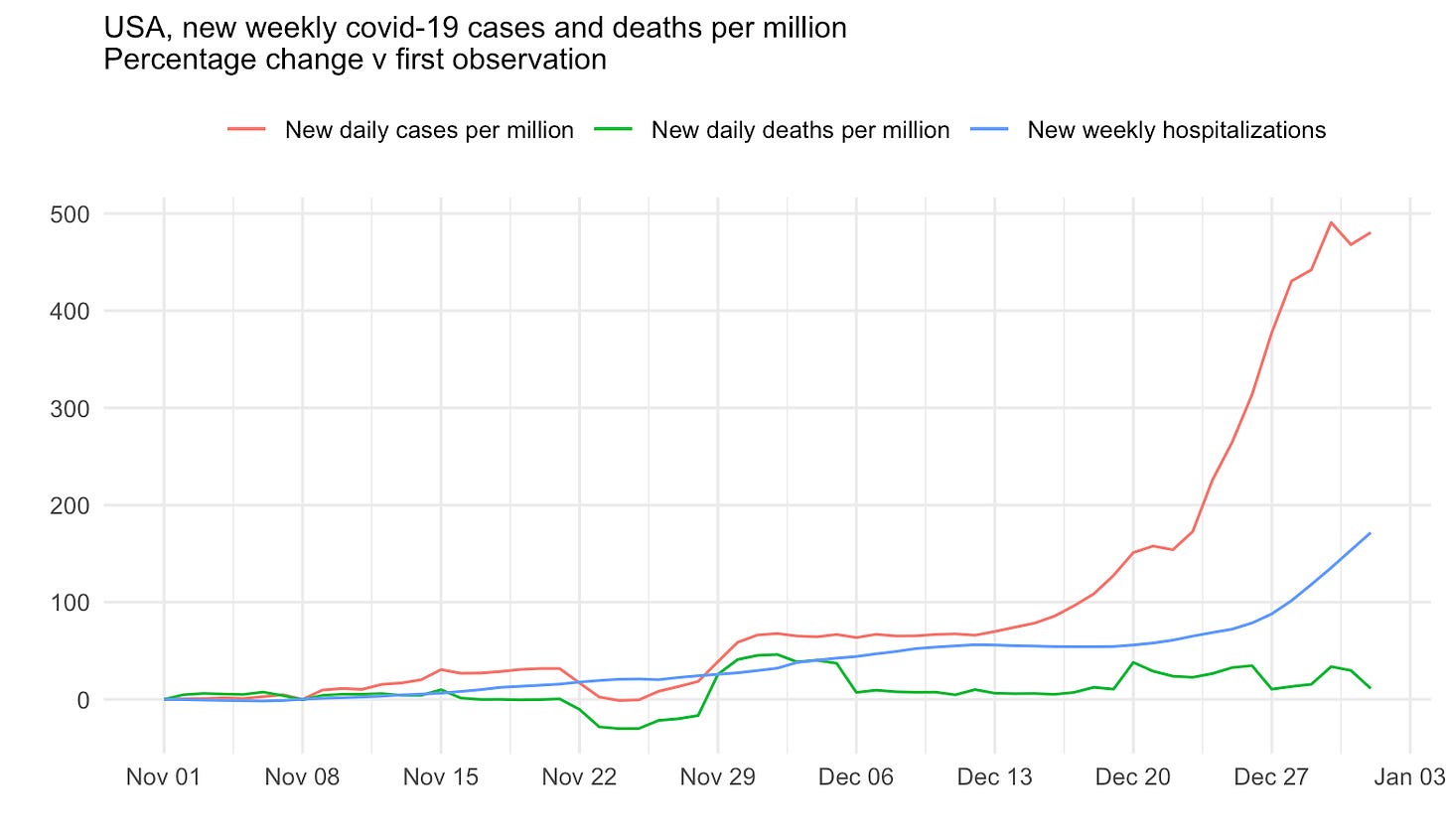The good news about Omicron | No. 177 — January 2, 2022
Relative to cases, new daily hospitalizations and deaths are much lower than for prior variants. But can that continue?
Happy New Year to all, and may it welcome you with warm arms. After contracting covid-19 for Christmas, 2022 has already awarded me a full recovery. Many thanks to the readers who wished me well when I was out of commission.
The thing about finally getting covid-19 is that it brings a whole new meaning to “seeing yourself in the data” — one principle of data visualization we’re taught to keep in mind to maximize the value of data journalism. The following chart of daily new covid-19 cases in America, for example, now contains one tiny pixel for my own case. And that’s…. pretty cool, I guess? Especially since I’m healthy again. Others have not been so lucky as to be young, and with no comorbidities…
Speaking of data and Omicron, we see the story of the variant when we compare plots of new daily cases and deaths per 1m people. Though the number of new case has jumped over three-fold, from 364 to 1,268, in the last month, the number of new deaths has not increased accordingly. In fact, deaths per million are currently lower than in October, for example. See the chart below:
Of course, there is a lag between cases and deaths, as it takes some time for a covid-19 patient to worsen to a terminal point. So we may want to look at hospitalizations instead. Yet on this measure, too, there is a noticable decoupling from the raw number of cases. (Note that the x axis shows each measure relative to its reading in July-August 2020 — that way, I can put them all on the same chart.)
Zooming in to the last two months, while the number of new daily cases per million is up nearly 500%, the raw number of new weekly hospitalizations is up just 170%:
To be sure, the trends in all these readings are concerning. There is an upward trajectory to the number of new covid-19 cases, hospitalizations, and deaths which is unlikely to be immediately reversed by changes in public health measures or public policy. Further, Omicron is so contagious that the number of people infected is liable to increase rather exponentially for a while — and even if the number of people being hospitalized or dying from it is low, a small percentage of a huge number is still a large number.
But the good news is that Omicron has yet to produce the massive wave of hospitalizations and deaths that many feared — or, yes, may yet come to pass. On that front, policymakers are biding very precious time to stop what may be coming. Hospitalizations among unvaccinated Americans have soared in recent weeks. That may be a precursor to an increase in deaths we have yet to see. Though there is the troubling reality that if someone is still unvaccinated today, there is likely very little that can convince them to get their jabs now. The importance of public trust may dawn more on us in the coming weeks and months.
Posts for subscribers
If you liked this post, please share it — and consider a paid subscription to read additional in-depth posts from me. Subscribers received one extra post over the last week:
Thanks for reading
That’s it for this week. Thanks so much for reading. If you have any feedback, you can reach me at this address (or respond directly to this email if you’re reading in your inbox).








